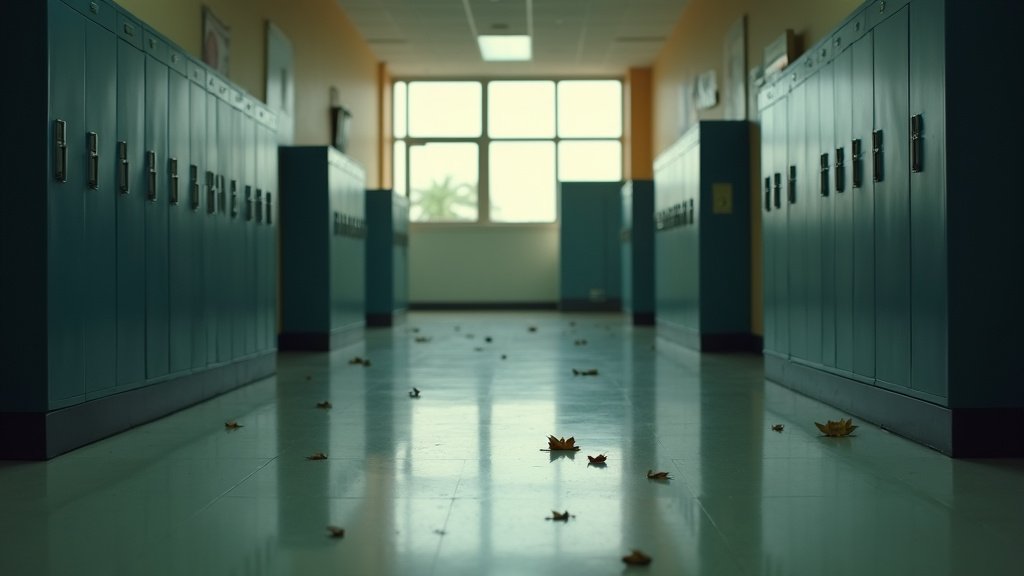Miami-Dade County Public Schools (M-DCPS) is currently grappling with a substantial decrease in student enrollment, a trend that has become a significant concern for district officials and educators alike. Preliminary data indicates a notable drop in student numbers over the past year, sparking discussions about the underlying causes and the potential long-term effects on the district’s funding, resources, and educational planning.
Quantifying the Decline
Recent reports highlight a concerning downward trend in student enrollment for Miami-Dade’s public school system. According to data shared by school board member Steve Gallon, initial attendance numbers for the current school year show approximately 13,059 fewer students enrolled in M-DCPS compared to the previous year. Specifically, enrollment figures for the start of the last school year were 326,279, while this year’s initial count stands at 313,220 students. Another report suggests that the district is facing a deficit of nearly 12,000 students this year, with current enrollment figures at 236,519 compared to the previous record of 248,949. This represents a significant loss of students, contributing to a challenging financial outlook for the district.
Underlying Causes of the Enrollment Drop
Multiple factors are believed to be contributing to this sharp decline in public school enrollment. A prominent reason cited is the expansion of Florida’s universal school voucher program, which allows students to use state-funded scholarships for private school tuition. Proponents of traditional public schools, like school board member Steve Gallon and United Teachers of Dade president Antonio White, express concern that these vouchers are diverting funds from public education to private institutions, potentially creating a two-tiered system. Since Florida expanded these vouchers to all families regardless of income in 2023, the state’s budget for them has surged from $1 billion to $4 billion.
Another significant factor contributing to the enrollment decrease is the impact of immigration policies and shifts. School board member Steve Gallon has noted a decrease in foreign students, suggesting that immigrant families might be hesitant to send their children to school due to immigration policies or economic conditions. Historically, M-DCPS has seen a substantial influx of immigrant students, particularly from countries like Cuba, Nicaragua, and Venezuela. However, recent trends, including changes in federal immigration policies and a general decrease in birth rates, may be influencing these numbers. In the past, a decline in birth rates around the time of the Great Recession was also identified as a factor reducing the number of younger students entering the system.
Competition from charter schools and private schools also plays a role. These institutions offer alternative educational environments that are increasingly appealing to parents seeking different educational philosophies or specialized programs. The district has observed an increase in charter school enrollment over the years, with some estimates suggesting a significant rise in students attending these schools compared to traditional public schools.
Implications for Miami-Dade Schools
The decline in enrollment has tangible consequences for Miami-Dade County Public Schools. School funding in Florida is largely based on per-pupil allocations, meaning fewer students translate directly into reduced funding. This financial strain can lead to critical issues such as potential teacher layoffs, cuts to essential programs like Advanced Placement (AP) and International Baccalaureate (IB) classes, and a reduction in student services. The district is already facing budget deficits, and continued enrollment drops exacerbate these financial challenges. Furthermore, under-enrolled schools present an operational and financial challenge, potentially leading to discussions about repurposing buildings, consolidating campuses, or adjusting school boundaries.
District’s Response and Future Outlook
In response to dwindling enrollment and the resulting financial pressures, M-DCPS is exploring various strategies. The school board is considering repurposing underused school sites into early learning centers, a move aimed at leveraging existing infrastructure and providing vital educational services. Initiatives are also underway to highlight the value of specific public schools that have strong academic records but are experiencing low enrollment, often through partnerships with the private sector and community leaders. These efforts include showcasing exemplary schools and improving communication about their offerings.
The district’s enrollment numbers have seen fluctuations in previous years. For instance, in the 2022-2023 academic year, enrollment had shown an increase due to a surge in immigrant students, reversing a seven-year decline. However, the most recent data indicates a renewed downward trend. The school district’s Chief Financial Officer, Ron Steiger, previously noted that while voucher programs have expanded, they were initially funding students who would have attended private schools anyway, not necessarily those leaving public schools. Nevertheless, the impact of these programs on public school funding remains a persistent concern.
As Miami-Dade County Public Schools navigates this complex landscape, the focus remains on adapting to demographic shifts and educational choices. The news from Miami underscores a broader trend affecting public education systems nationwide, highlighting the critical need for strategic planning, innovative solutions, and sustained support to ensure the quality and accessibility of public education for all students.





